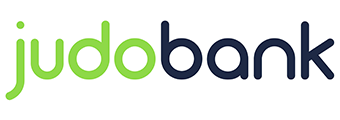The Government announced the scheme as part of its $200 billion stimulus package, designed to keep businesses and employees afloat while the economy is in hibernation, due to COVID-19.
Unemployment was thought to rise as high as 15% due to the pandemic, but Treasurer Josh Frydenberg said it won't breach 10% thanks to the scheme.
Businesses eligible for JobKeeper will receive $1,500 per eligible employee per fortnight, with a legal obligation to ensure the employers pass on the full amount.
Due to the complexity of the scheme and government jargon, there has been a lot of confusion amongst businesses as to how to apply for the scheme upon its May 4 start.
Perhaps the most important point regarding JobKeeper for employers is that it's a rebate, not a payment. Businesses can only claim for JobKeeper provided they have already been paying their employees.
So how do you know if your business is eligible and how do you apply? Let's find out below.
If you're an employee wanting to find out how to receive your stimulus payments, click here.
What's in this article?
- JobKeeper employer obligations
- Employers eligible for JobKeeper
- How to know if your employees are eligible for JobKeeper
- How to apply for JobKeeper
- How to know how much to pay employees
Want to earn a fixed interest rate on your cash? The table below features term deposits with some of the highest interest rates on the market for a six-month term.
JobKeeper employer obligations
To receive the JobKeeper payments, employers must:
- Apply to the Australian Tax Office (ATO) website to assess that they have or will likely experience loss of turnover.
- Provide information to the ATO on all eligible employees who were employed as at 1 March 2020 and those currently employed, including those stood down or re-hired.
- Ensure each eligible employee receives at least $1,500 per fortnight (before tax). Employees who receive more than $1,500 per fortnight will continue to receive their regular income. Employees who were receiving less than $1,500 must be paid at least $1,500 per fortnight before tax.
- Notify all eligible employees they are receiving the JobKeeper payment.
- Continue to provide information to the ATO on a monthly basis, including the number of eligible employees employed by the business.
Employers eligible for JobKeeper
Businesses, which includes not-for-profits, will be eligible for JobKeeper if:
- they have a turnover of less than $1 billion and their turnover has fallen or will likely fall by 30%; or
- they have a turnover of $1 billion or more and their turnover has fallen or will likely fall by 50%; and
- their business is not subject to the Major Bank Levy.
Self-employed individuals will also be eligible for JobKeeper provided they meet the relevant turnover test above.
How to know if your employees are eligible for Jobkeeper
Eligible employees are employees who:
- are currently employed by the eligible employer (including those stood down or re-hired);
- were employed by the employer at 1 March 2020;
- are full-time, part-time, or long-term casuals (a casual employed on a regular and systemic basis for longer than 12 months as at 1 March 2020);
- are a permanent employee of the employer, or if a long-term casual employee, not a permanent employee of any other employer;
- are at least 16 years of age at 1 March 2020;
- are an Australian citizen, the holder of a permanent visa, or a Special Category (Subclass 444) Visa Holder at 1 March 2020;
- were a resident for Australian tax purposes on 1 March 2020; and
- are not in receipt of a JobKeeper Payment from another employer.
You cannot claim for any employees who were employed by you after 1 March 2020 or left your employment before this date.
However, if you terminated an employee after this date, you can re-engage with them and they will be eligible if they met the criteria on 1 March 2020, provided they wish to be re-hired by you and participate in the scheme.
An employee cannot receive the JobKeeper payment from more than one employer: If your employees have multiple employers they can choose which employers they want to nominate through.
Once you know who your eligible employees are you must notify them you intend to enrol them in the JobKeeper scheme and they must agree to be nominated.
How to apply for JobKeeper
The business owner or a registered tax professional can enrol for JobKeeper payments by doing the following:
- Check you and your employees meet the eligibility requirements.
- Pay at least $1,500 to each eligible employee per JobKeeper fortnight (the first JobKeeper fortnight is 30 March to 12 April).
- Notify eligible employees you intend to claim the JobKeeper payment on their behalf and ensure they aren't claiming payments from another employer.
- Send the JobKeeper employee nomination notice to your nominated employees to complete and return to you and keep a copy.
- From 20 April 2020, you can enrol to receive the JobKeeper payment via the ATO Business Portal. You must do this by the end of April to claim JobKeeper payments for April.
- Specify the estimated number of employees who will be eligible for the first JobKeeper fortnight you wish to claim for and the second fortnight you wish to claim for.
- Payments will start flowing from May 4, backdated to March 30.
Businesses will be required to provide monthly updates to the ATO, with regards to current and projected turnover, as well as eligible employee changes.
Those who are self-employed can register via the ATO's website and will need to provide an ABN for their business, nominate an owner to receive the payment, provide that owner's Tax File Number (TFN) and provide a declaration as to recent business activity.
How to know how much to pay employees
Businesses are required to pay eligible employees at least $1,500 per fortnight to be eligible for the JobKeeper scheme.
How much more you are required to pay employees is dependent on what they typically earn per fortnight.
Here's a case study to see how that would work.
Cafe case study
John owns a cafe with two employees. It's still operating but only for take away, and John projects his turnover will decline by more than 30% in the next few months. John is eligible to receive the Jobkeeper payment but his two employees are on different wages.
Sarah
Sarah is a permanent full-time employee on a salary of $3,000 per fortnight before tax and has continued to work for John at the cafe in this full time capacity. John will be required to pay Sarah her full time salary of $3,000 per fortnight and will receive the JobKeeper wage subsidy of $1,500. John will also continue to pay Sarah superannuation.
Anna
Anna is a permanent full-time employee on a salary of $1,000 per fortnight before tax and has continued to work for John at the cafe in this full time capacity. John will be required to pay Anna her full time salary of $1,000 per fortnight and an additional $500 and will receive the JobKeeper wage subsidy of $1,500. John will also continue to pay Anna superannuation but can choose whether to pay this on the additional $500 or not.
For employees who have been stood down without pay or terminated, employers must re-engage with those employees to nominate them for the scheme and to see if they wish to participate, and pay them at least $1,500 per fortnight, in the same fashion as above.
For all other enquiries and further information, visit the ato.gov.au








 Harry O'Sullivan
Harry O'Sullivan

 Denise Raward
Denise Raward
 William Jolly
William Jolly
 Emma Duffy
Emma Duffy